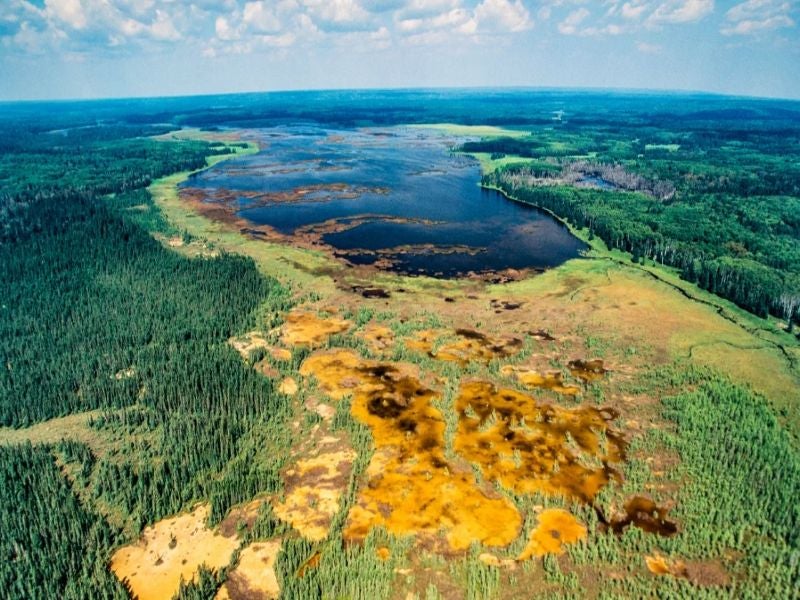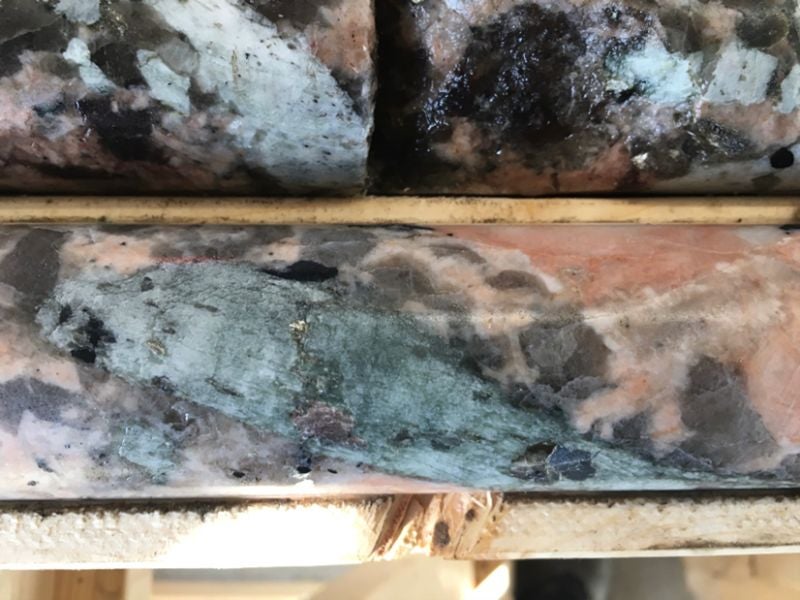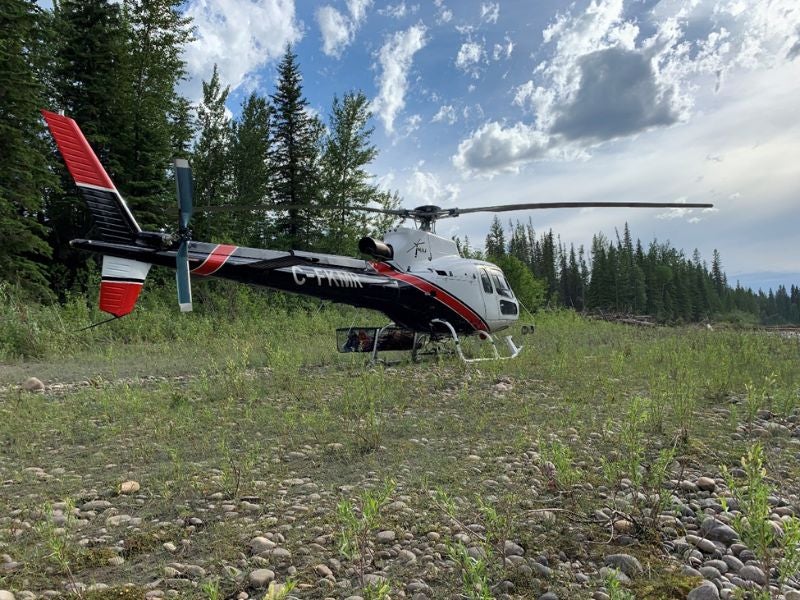The Snow Lake Lithium Project is an open-pit and underground lithium mine located in Manitoba, Canada. The mine is owned by Snow Lake Resources.
Snow Lake Energy is a wholly owned subsidiary of Snow Lake Resources.
Being the world’s first fully electric lithium mine, the project consists of two deposits: Grass River Lithium (GRL) and Thomson Brothers Lithium (TBL).
GRL consists of four pegmatite dykes and TBL is a tubular-shaped vertical deposit. Initially, TBL consisted of 38 mineral claims covering 5,596 hectares (ha).
Snow Lake Resources acquired additional land of Crown Land covering 13,603ha. In January 2023, Snow Lake staked nine more mineral claims covering 1,729ha bringing the total land holdings to 24,114ha.
An initial assessment report of the project was published in August 2023. As per the report, the project has a mine life of nine years.
The measured and indicated mineral resources make up 89% of the total minerals mined from the project. The mine has potential to increase the tonnage via exploration and drilling programmes.
Snow Lake Location and Site Access
The Snow Lake Lithium Project is located near Snow Lake towards the east at a distance of 20km. The lake is approximately 684km north of Winnipeg, Canada.
The Flin Flon Town connects Snow Lake via a highway and is located 200km away. The town is accessible by air from Winnipeg.
Both deposits of the project are in North-Central Manitoba towards the northeast of Wekusko Lake. The Herb Lake Town is also situated near the project site.
The project can be accessed by helicopter throughout the year. In summer, the project is accessible by boat across the Wekusko Lake.
The Hudson Bay Railway Station is located 35km south of the project. A municipal airstrip lies 10km north and the nearest highway is located within 11km of the project location.
Snow Lake Lithium Project History
The Wekusko Lake was explored by two geologists: J.B. Tyrell and W. McInnes in 1896. M.J. Hackett and Richard Woosey in 1896. M.J. Hackett and Richard Woosey discovered the first gold and staked the Kiski-Wekusko gold claims in 1914.
This resulted in the discovery of a major gold vein named Rex M.C. (later Lagoona Mine). Snow Lake Town was established in 1947.
The town was established to support the development and operations of the Nor-Acme Gold Mine. Howe Sound commenced gold production at the Nor-Acme Mine in 1949.
Several lithium (spodumene)-bearing pegmatite dykes were discovered in the region. These pegmatites were named the Sherritt Gordon pegmatites in the name of the Sherritt Gordon Company.
Sherrit Gordon pegmatites were renamed as the Grass River pegmatites later. Some more pegmatites were discovered in 1955 by Combined Developments known as Violet pegmatites (now Thomson Brothers pegmatites) after Thomson Brothers Company.
Thomson Brothers explored the property from 1967 to 1987 by trenching and sampling. In 1989, metallurgical testing was conducted by Lakefield Research producing a spodumene concentrate.
Strider Resources conducted minor trenching and sampling of the TB-1 dyke in 1995. The property was optioned off to Black Pearl Minerals and Forbes and Manhattan between 2007 and 2009.
In 2016, the TBL property was optioned by Ashburton by Strider. Ashburton signed an option agreement with Manitoba Minerals, a subsidiary of Quantum.
The property was subjected to historical drilling, prospecting, and oil sampling (fall of 2016). In December 2017, Quantum changed its name to Nova Minerals.
Ashburton changed its name to Progressive Planet Solutions in May 2018. Nova conducted a drill programme in 2018 totalling 3,798.14m on the TBL.
Nova staked 18 claims (Block B covering 3,319ha) contiguous with the original claims (Block A covering 2,277ha).
Snow Lake (Crowduck), a wholly owned subsidiary of SLR, acquired Block B claims and prepared a technical report of the project in 2021 after an inferred resource estimate by Nova in July 2018.
Snow Lake Lithium Geology and Mineralisation
The bedrock of the east side of Wekusko Lake consists of fault-bounded blocks made up of volcanic rocks, juvenile ocean floor, fluvial-alluvial, and turbiditic sedimentary rocks.
The pegmatites are formed by slow cooling of igneous bodies and consist of quartz, feldspars, mica, mafic, and granitic to syenitic minerals.
The TBL dikes are intrusions into a pebble meta-conglomerate group of host sediments. The dykes consist of mineralised and unmineralised pegmatites carrying spodumene as the lithium-bearing mineral.
The GRL dykes also consist of mineralised and unmineralised pegmatites carrying spodumene as the lithium-bearing mineral.
Snow Lake Lithium Mineral Resource Estimate
The measured mineral resource estimates for the TBL and GRL are 2.52Mt containing lithium oxide at a grading of 0.96% and 4.99Mt containing lithium oxide at a grading of 1.21%.
The indicated mineral resource estimates for the TBL and GRL are 55.64Mt containing lithium oxide at a grading of 1.12% and 10.45Mt containing lithium oxide at a grading of 0.98%.
The total (measured and indicated) mineral resource estimate of the Snow Lake Lithium Project is 73.6Mt containing lithium oxide at gradings of 1.11% for TBL and 1.06% for GRL.
The inferred mineral resource estimates for the TBL and GRL are 5.67Mt containing lithium oxide at a grading of 1.06% and 4.9Mt containing lithium oxide at a grading of 0.83%.
Mining Method and Ore Processing
The TBL deposit will be mined by a long-hole longitudinal bottom-up stoping method using unconsolidated backfill.
The GRL deposit will be mined using a conventional truck and shovel open pit method transitioning into an underground long longitudinal bottom-up stoping using unconsolidated backfill.
The underground mining of both deposits will be conducted with the same fleet (mostly electric) owned and operated by Snow Lake.
The open pit operations will result in 6.24Mt of lithium oxide at an average grading of 0.91%. The underground operations will produce 9.78Mt at an average grading of 0.84% of lithium oxide.
The processing of ores will consist of the run of mine material being crushed by a jaw crusher at approximately 3,000 tonnes per day (tpd).
The crushed material will be pre-concentrated using an X-ray transmission (XRT) ore-sorters and then sent to the processing plant at approximately 2,500tpd.
In the processing plant, the material will be crushed by a cone crusher to -9.5mm size. The +0.85mm will be transported to two stages of dense media separation at SG 2.7 and 2.9.
The collected dense material from the second stage of dense media separation is transferred to the final product disk filter.
The rest material will be transported to the magnetic separator for the removal of iron impurities and to the deslime cyclones for the removal of fines.
After the removal of impurities and fines, the material will undergo mica flotation for the removal of mica. After the removal of mica, the material is sent to the thickener.
To extract the final product, the remaining slurry is sent to spodumene flotation.
Snow Lake Lithium Project Infrastructure
The Snow Lake Lithium Project will consist of a 7,000m (7km) new access road, an administrative building, offices, a processing plant, a water treatment facility, a retention pond, and ventilation shaft structures at both deposits.
The infrastructure will also include a power transmission line, a substation, a fuel and lubrication storage facility, a tailings management facility, and an underground portal at both deposits.
Power Transmission Details
The electricity will be supplied by Manitoba Hydro’s Herblet Lake Substation. The estimated preliminary power needs are approximately 25MW.
A transmission line of 230kV will be connected to the Herblet Lake Substation. The substation will step-down the voltage from 230kV to 13.8kV.
Contractors Involved
The 2023 initial assessment report of the Snow Lake Lithium Project was prepared by ABH Engineering and SLR Consulting (Canada).
AIM Power Solutions prepared the Snow Lake Lithium Mine Transmission Line Feasibility Design Report.
ABH Geological Services assisted Snow Lake Lithium in modelling the GRP dykes of the GRL deposit in June 2023.
Manitoba Hydro and LG Energy Solution were selected to explore the development of the lithium hydroxide processing plant in October 2022.
In June 2022, the University of Manitoba and Snow Lake Lithium undertook a research project to explore the critical mineral inventory of the project site.
The April 2022 metallurgical testing of the samples from the project was conducted by SGS Canada at its Lakefield Laboratory, Ontario.
In February 2022, Snow Lake Lithium reported the results of the Drone Magnetic Survey conducted by EarthEx on the GRL deposit.
Forage BRL Drilling and QB Drilling were awarded the contracts by Snow Lake Lithium in February 2022 for the winter drilling project on the project site.
The Environmental Baseline Program of the project was conducted by SLR Consulting. Snow Lake Lithium announced the contract in December 2021.





